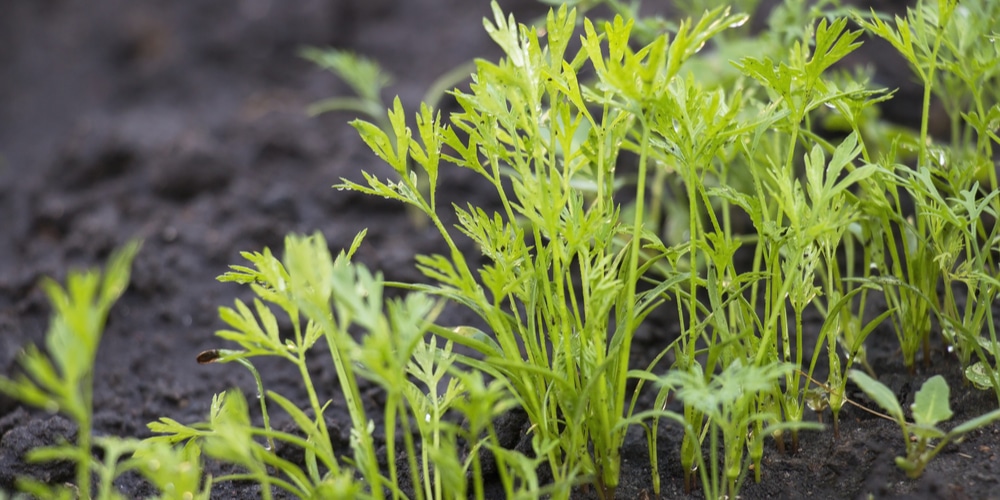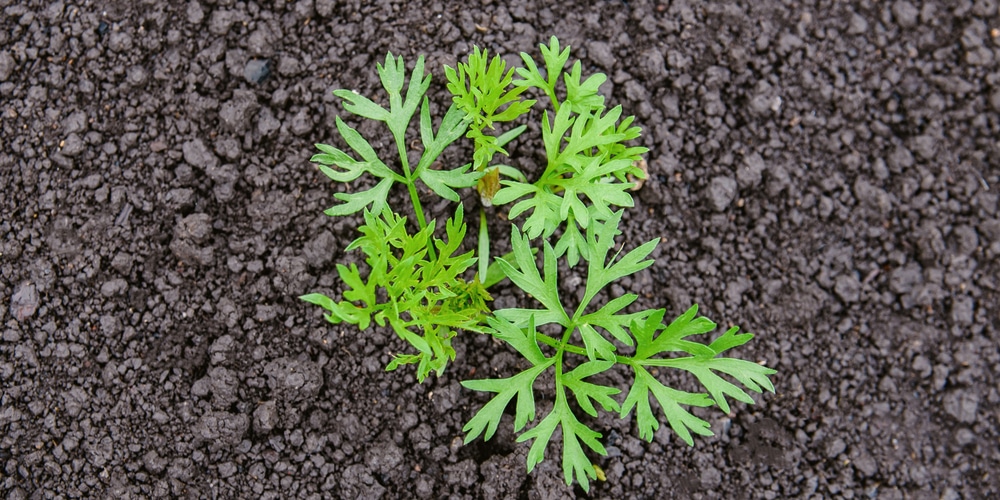| Question | When to Plant Carrots? |
|---|---|
| Answer | Early Spring to Summer, depending on the region |
| More Info | – Northern US: Plant as soon as the soil can be worked in early spring. Succession planting every 2-3 weeks until midsummer for a continuous harvest. – Southern US: Plant in late winter to early spring for a spring harvest and late summer to early fall for a winter harvest. – Western and Central US: Timing varies widely with elevation and climate; generally, plant after the last frost in spring and again in late summer for fall harvest. Carrots prefer cool temperatures (60°F-70°F) and well-drained, loose soil. |
Carrot Growth Cycles: The Basics
When gardeners plant carrots, they embark on a rewarding journey defined by distinct stages of development. Each phase is critical to achieving a crop of crunchy, sweet carrots.
Germination: This is the onset of the carrot’s life cycle, requiring about 1-3 weeks for sprouts to appear. During this time, consistent moisture aids in sprouting a thin, white root responsible for nutrient absorption.
- Soil Temperature for Germination: Ideally between 45°F to 85°F.
Seedling: Following germination, delicate green shoots emerge with the first set of true leaves.
- Sunlight Needs: A minimum of 6 hours daily.
Vegetative Growth: Leaves proliferate as roots develop below the surface, establishing the structure of the mature carrot. This vegetative phase spans several weeks.
- Water Requirement: Regular watering for steady growth, but avoid waterlogging.
Root Development: This is when the Daucus carota thickens and elongates, gradually transitioning from white to the vibrant orange color commonly associated with carrots (though other colors exist).
- Soil Type: Deep, loose, and well-draining soil free of rocks or debris.
Optimal Climate Conditions for Planting Carrots
When planting carrots, success hinges on providing the ideal soil and air temperatures to facilitate germination and growth. Carrots thrive in conditions that are not too hot or cold.
Soil Temperature for Germination
For optimal germination, carrot seeds require soil temperatures to be consistently between 50-85°F (10-29°C). The seeds are particularly sensitive to temperature, and the soil should be warm enough to encourage germination but not so warm that it hinders the process.
- Minimum soil temperature: 50°F (10°C)
- Ideal soil temperature range: 65-75°F (18-24°C)
- Maximum soil temperature: 85°F (29°C)
Air Temperature Preferences
Carrots prefer a moderate air temperature range during their growing season. They grow best when daytime temperatures are approximately 60-75°F (15-24°C) but can tolerate temperatures up to 80°F (27°C).
- Optimal daytime temperature range: 60-75°F (15-24°C)
- Tolerable maximum temperature: 80°F (27°C)
- Readings below 50°F (10°C) can stunt growth and lead to poor germination rates.
Preparing the Soil for Carrot Planting
Successful carrot cultivation begins with meticulous soil preparation. Soil that suits the carrots’ needs encourages deep root growth and leads to a harvest of crisp, flavorful vegetables.
Soil Composition and pH
Carrots thrive in soil that is light, sandy, and well-drained. They prefer a slightly acidic to neutral pH range, ideally between 6.0 and 7.0.
- Ideal pH for Carrots: 6.0 – 7.0
- Organic Matter: Compost, aged manure, leaf mold
Bed Preparation Tips
Before planting, carrot beds require thorough preparation. Gardeners should loosen the soil to a depth of at least 12 inches to accommodate the taproot.
- Loosen Soil: Minimum of 12 inches deep
- Remove Obstacles: Rocks, chunks, and hard clots
Carrot Varieties and Their Planting Timelines
Choosing the right carrot variety can significantly impact the crop’s performance and harvest timing. Below, readers can learn about the optimal timeline to plant different carrot varieties for the best yield.
Early Season Varieties
Early season carrots mature quickly, often ready to harvest within 50 to 60 days. Varieties like ‘Nantes’ and ‘Adelaide’ are ideal to sow as early as 2-4 weeks before the last expected frost. Their quick maturation makes them suitable for a successive planting strategy, allowing for multiple harvests throughout the growing season.
- ‘Nantes’: Sow in early spring, ready to harvest in as little as 50 days.
- ‘Adelaide’: A baby carrot variety that can be harvested in about 60 days.
Mid-Season Varieties
Mid-season carrots such as ‘Danvers’ and ‘Chantenay’ require a bit more growing time and can be harvested around 70 to 80 days after planting.
- ‘Danvers’: Plant in late spring for a hearty, mid-season crop.
- ‘Chantenay’: Sow after the last spring frost, ready in 70-80 days.
Late Season Varieties
Late season carrots, including storage types like ‘Autumn King’ and ‘Bolero’, need the full growing season to mature, generally 80 days or more. These are hardy enough to withstand cooler fall temperatures and are perfect for a late summer planting that will yield a late fall harvest, often benefiting from sweeter flavors developed during cold nights.
- ‘Autumn King’: Plant in late summer for a rich, late-fall harvest.
- ‘Bolero’: Sow mid-summer to enjoy sweet carrots that store well into winter.
Carrot Care and Maintenance
Efficient care and maintenance are essential for growing crunchy, sweet carrots. Proper watering and diligent weeding and thinning practices are the anchors of healthy carrot development.
Watering Schedules
Carrots require consistent moisture to ensure proper growth. They should be watered deeply to promote strong root formation. Here are specifics:
- Frequency: Aim to provide one inch of water per week. If rainfall is scarce, supplement with manual watering.
- Method: Use drip irrigation or a soaker hose to deliver water directly to the roots, which minimizes leaf wetness and reduces disease risk.
Weeding and Thinning Practices
Controlling weeds and thinning carrot seedlings are vital to prevent competition for nutrients and space.
- Weeding: Weed regularly to prevent root crops from being overcrowded. Use a hoe or hand pull weeds, taking care not to disturb the carrot roots.
- Thinning:
- First Thinning: When carrot tops are 2 inches tall, thin them to stand 1 inch apart.
- Second Thinning: Once they reach a finger’s width in diameter, thin them again to stand 3 inches apart.
Frequently Asked Questions
When aiming for the crunchiest and sweetest carrots, one must consider timing, environment, and cultivation techniques. Here are some of the most common queries gardeners have when it comes to growing this popular root vegetable.
What is the optimal time of year to start planting carrots for the best flavor and texture?
For carrots to develop the best flavor and texture, they should typically be planted in the early spring, about 3 weeks before the last frost date. They can also be planted in the fall in some regions.
What are the steps to successfully grow carrots in a container environment?
To grow carrots in containers, select a deep pot to accommodate root growth, use loose potting mix, ensure proper drainage, and place the container in a location with sufficient sunlight. Frequent watering to keep the soil moist and timely harvesting when the carrots are of desired size are also crucial.
Can you cultivate carrots from the tops, and if so, how?
One can regrow carrot tops by placing the cut-off end in a shallow dish of water, with the cut side down. Keep the dish in a well-lit area and change the water regularly. This method won’t produce new carrot roots but will grow decorative foliage.
What are the recommended methods for planting and nurturing carrot seeds?
Carrot seeds should be sown directly into the soil. Keep the seeds moist for germination, and thin them out to stand 3 inches apart once seedlings appear.
The soil should be well-draining, free from rocks, and fertile for optimal growth.
What is the ideal amount of water for carrots to develop properly?
Carrots need about 1 inch of water per week, either from rainfall or watering. Consistent moisture is essential for uniform growth, but overwatering should be avoided to prevent root rot.
At what stage of carrot growth should fertilizer be applied, and which type is preferable for enhancing sweetness?
Fertilizer should be applied when the carrot tops are well established, usually a few weeks after planting.
A low-nitrogen, high-potassium fertilizer is recommended to enhance carrot sweetness and promote strong root development.
Last update on 2025-06-06 / Affiliate links / Images from Amazon Product Advertising API





